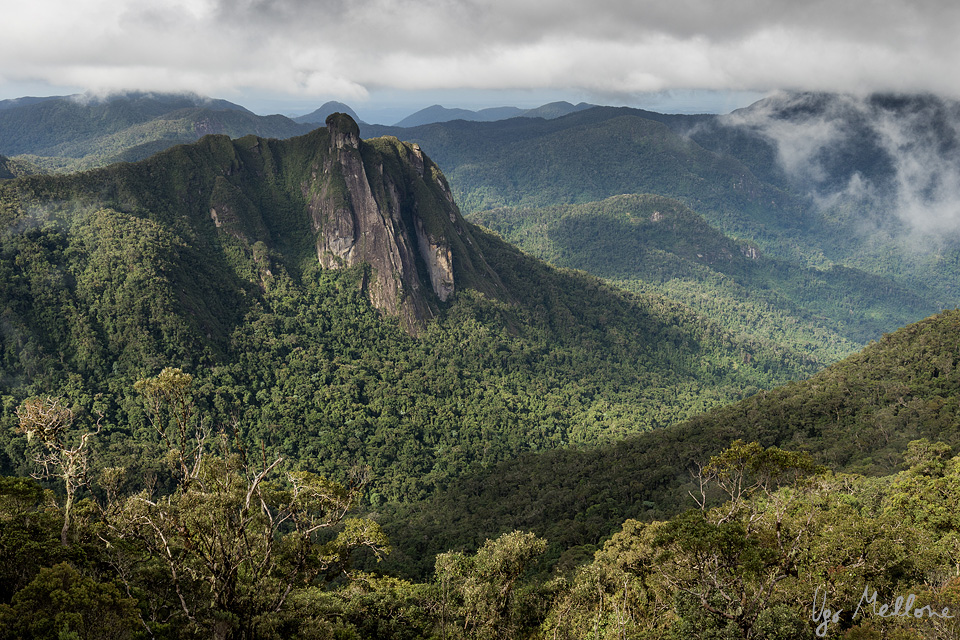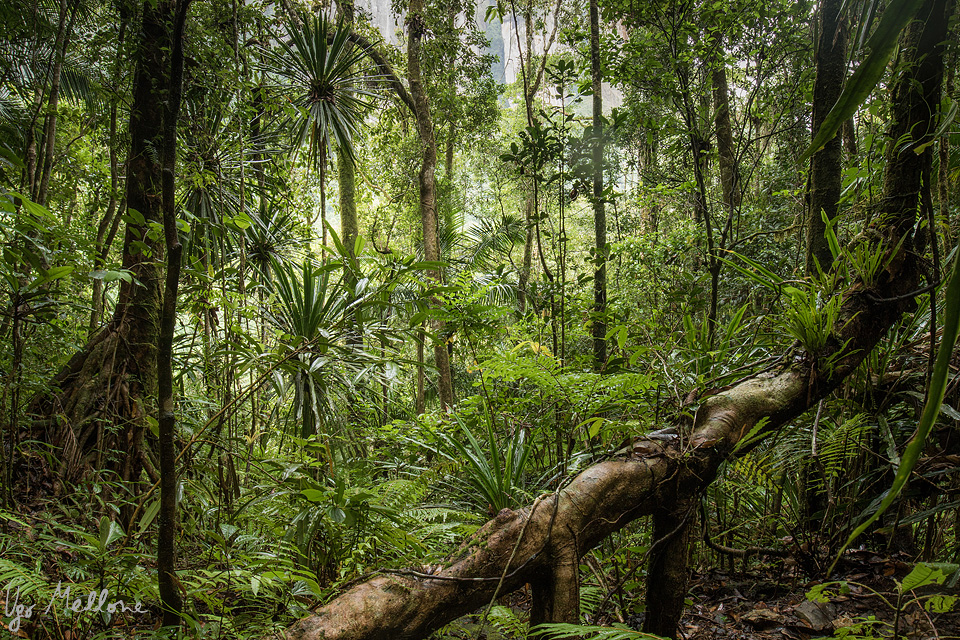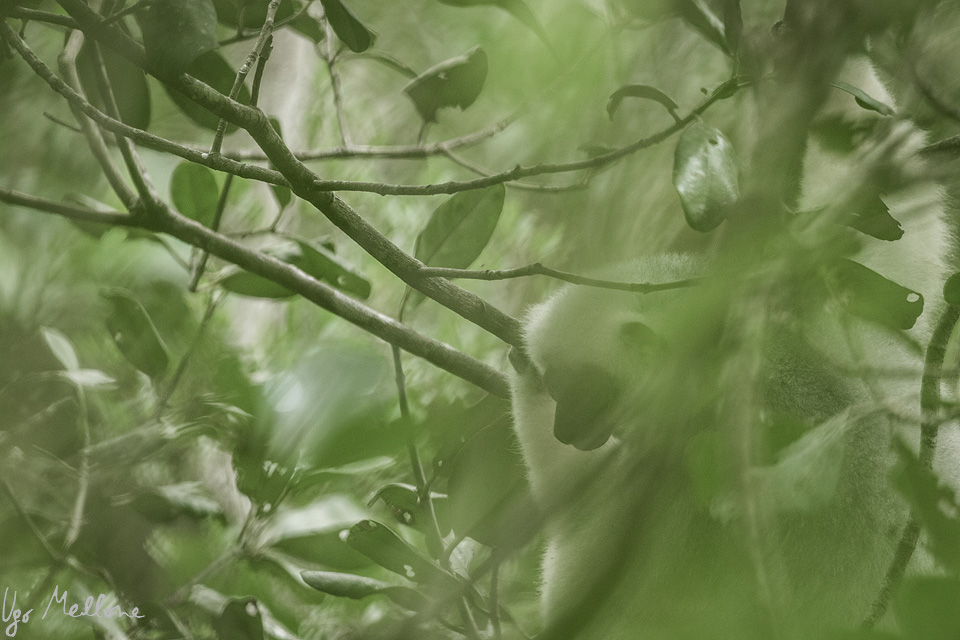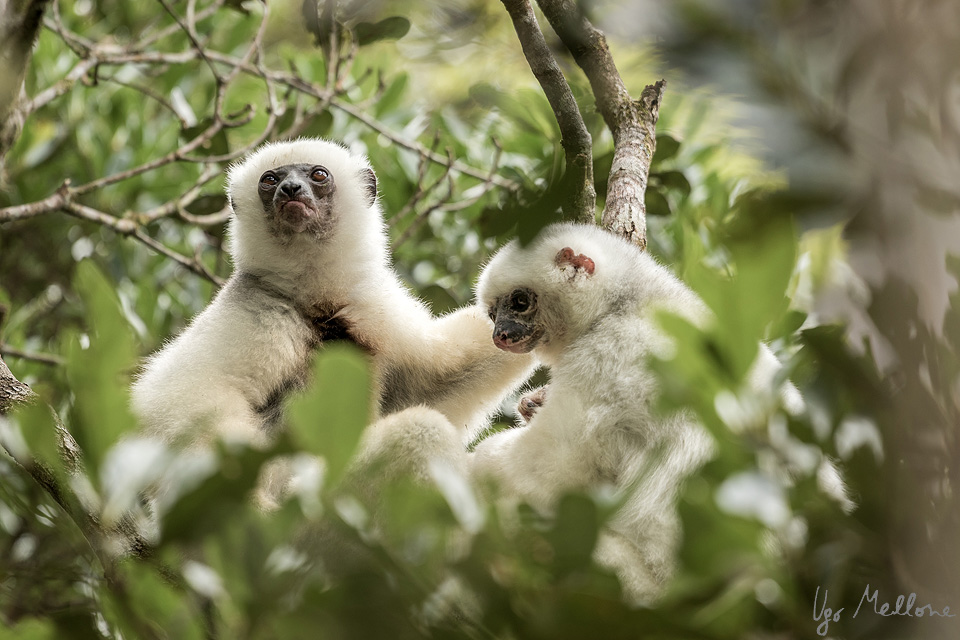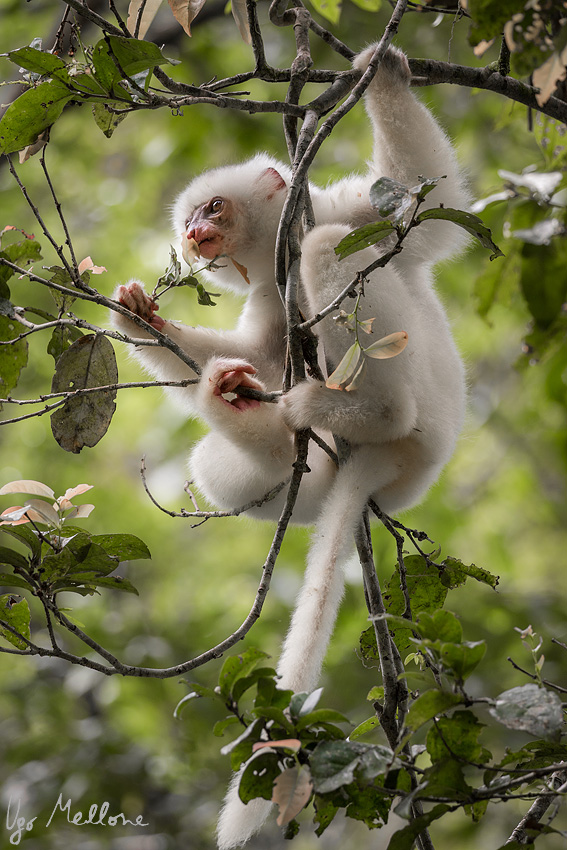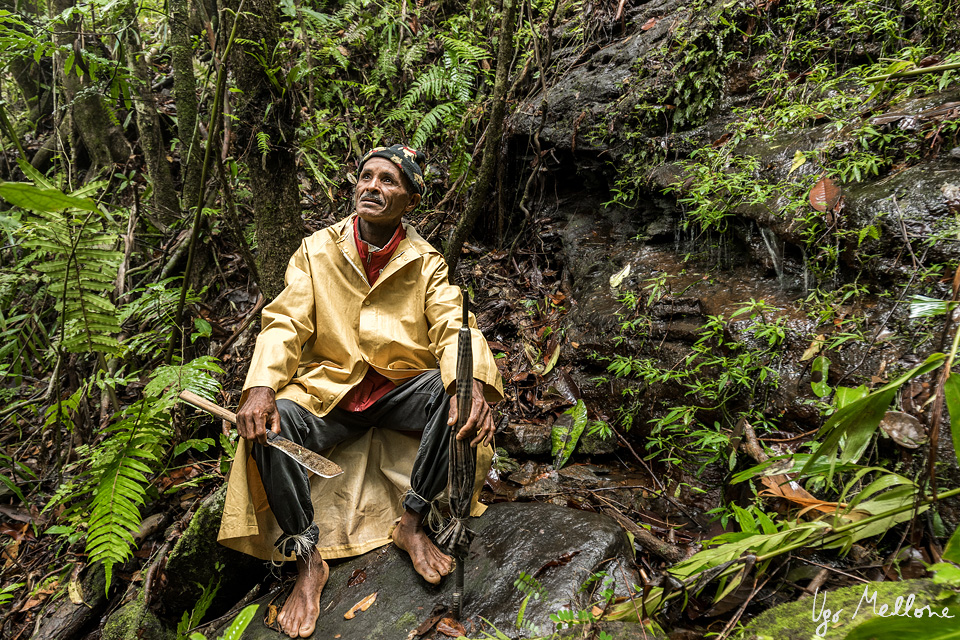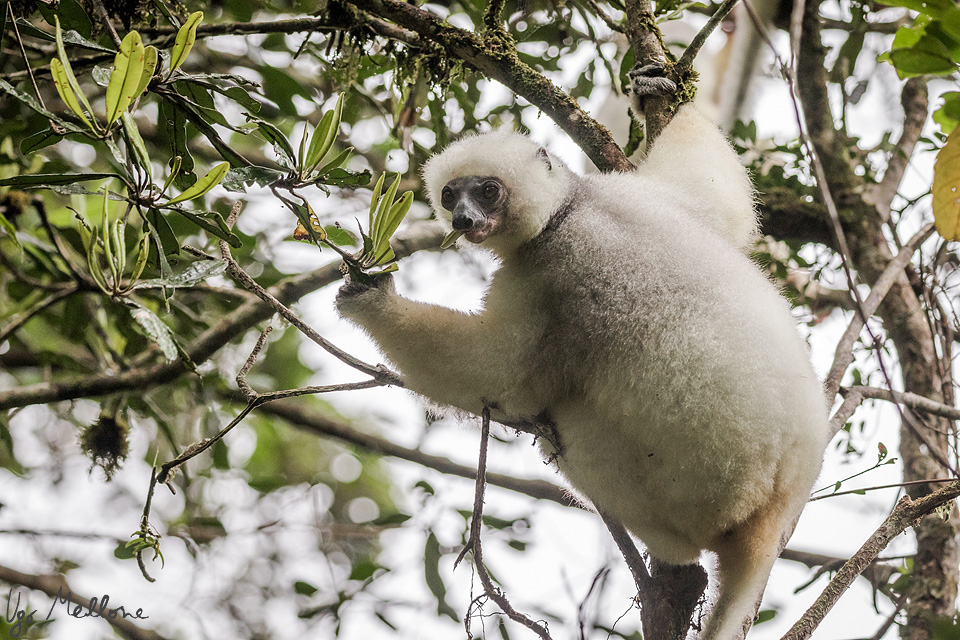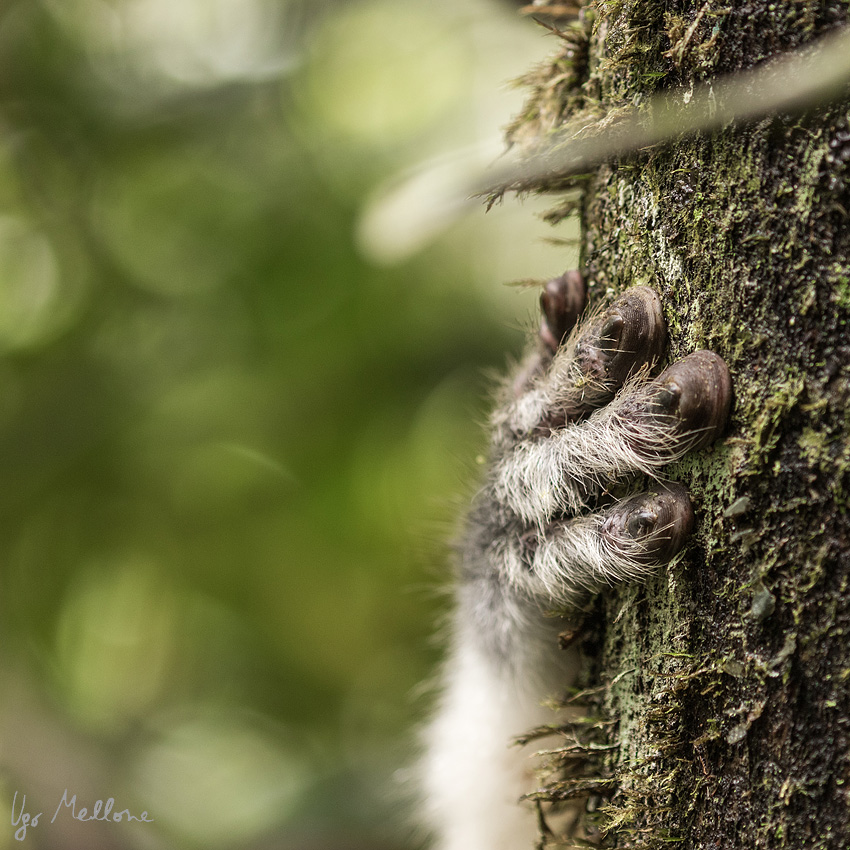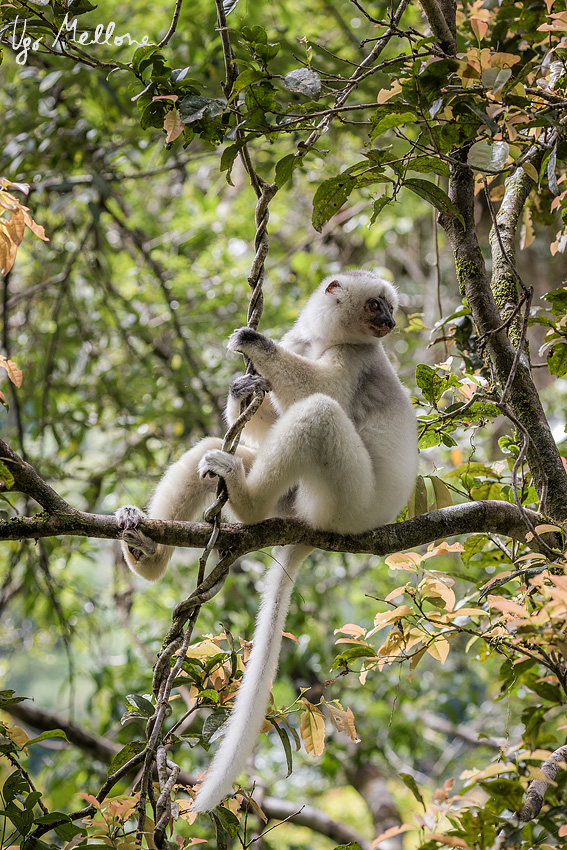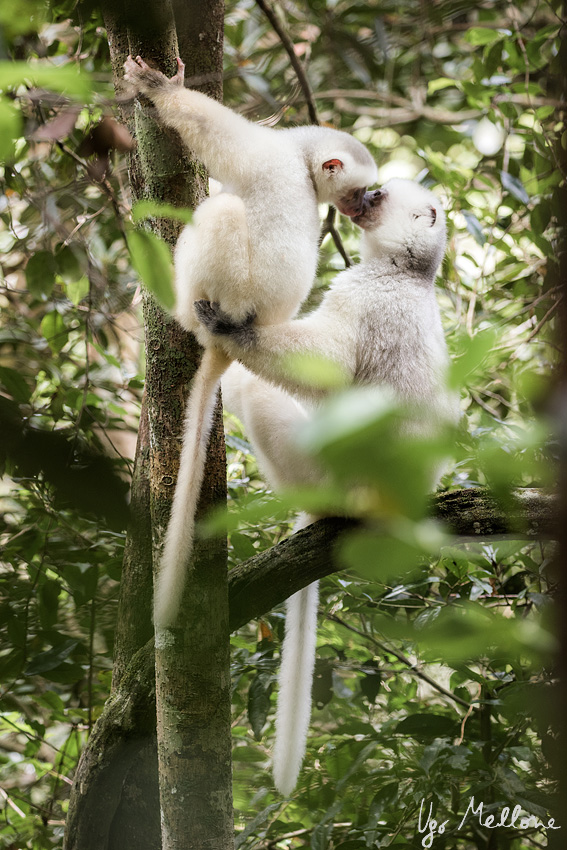Silky sifaka: angels of the forest
Marojejy National Park includes a mountain massif that goes beyond 2000 m a.s.l.
The mountain forest of this National Park are among the best conserved ones in Madagascar
Silky sifaka are often not easy to spot among the vegetation
Silkies live in groups that normally include several females and one male.
A young silky sifaka, less than one year old.
Nestor has been one of the first locals to be involved in the protection of silkies, as a tracker.
Silky sifakas feed mainly on leaves.
Sifakas are well adapted to getting around quickly and safely in their arboreal home.
The enlarged big toe (hallux) on the hindfoot functions as a semi-opposable thumb, allowing the feet a tong-like grip of tree limbs.
Like other lemurs, silky sifakas have a rich olfactory language, using scent to get their message across.
According to official data, less than 250 mature individuals of silky sifakas (Propithecus candidus) still inhabits the most remote corners of North-east Madagascar. This white lemur is found mainly in moist mountain forest, often hidden by clouds, as those protected by Marojejy National Park, where I took these pictures. Field studies revealed that they eat mainly leaves, but also seeds, fruits and flowers, from more than 100 species of plants. They live in groups of two to nine individuals, being active only during the day. Jumping among the trees, the simponas, as they are called by local people, may cover an average a distance of about a half km within a day. Habitat destruction linked to agriculture, illegal logging and mining, is their main threat, as well as hunting. Ecotourism activities carried out by local people are making possible to protect and study the silky sifaka troops of Marojejy.
Secondo i dati ufficiali, meno di 250 individui maturi di silky sifaka (Propithecus candidus) popolano ancora gli angoli piú remoti del Madagascar nord-orientale. Questo lemure abita foreste umide di montagna, spesso avvolte dalle nuvole, come quelle incluse nel Parco Nazionale di Marojejy, dove sono state scattata queste fotografie. Le ricerche sul campo hanno svelato che si nutrono prevalentemente di foglie, ma anche di semi, frutti e fiori, da piú di 100 specie di piante. Vivono in gruppi formati dai due ai nove individui, attivi solo di giorno. Saltando tra gli alberi, i simponas, come vengono chiamati localmente, possono coprire una distanza giornaliera media di circa 500 metri. La distruzione dell’habitat dovuta all’agricoltura, ai tagli illegali e alle miniere, é la loro principale minaccia, assieme al bracconaggio. Le attivitá di ecoturismo gestite dagli abitanti locali stanno rendendo possibile la protezione e lo studio dei silky sifaka del parco di Marojejy.
Según los datos oficiales, menos de 250 individuos maduros de silky sifaka (Propithecus candidus) sobreviven todavía en las areas más remotas del Noreste de Madagascar. Este lemur puebla selvas húmedas de montaña, a menudo envueltas entre nubes, como las que están incluidas en el Parque Nacional de Marojejy, donde he realizado estas fotos. Investigaciones de campo han desvelado que se alimentan principalmente de hojas, pero también de semillas, frutos y flores, desde más de 100 especies de plantas. Viven en grupos de dos hasta nueve individuos, activos exclusivamente durante el día. Saltando entre los arboles, los simponas, como se les llama localmente, pueden cubrir en promedio una distancia de alrededor de 500 metros por día. La destrucción del habitat debida al agricultura, a las talas ilegales y a la minería, es su principal amenaza, junto con la caza furtiva. Las actividades de ecoturismo gestionadas por la población local están facilitando la protección y el estudio de los silky sifaka de Marojejy.



